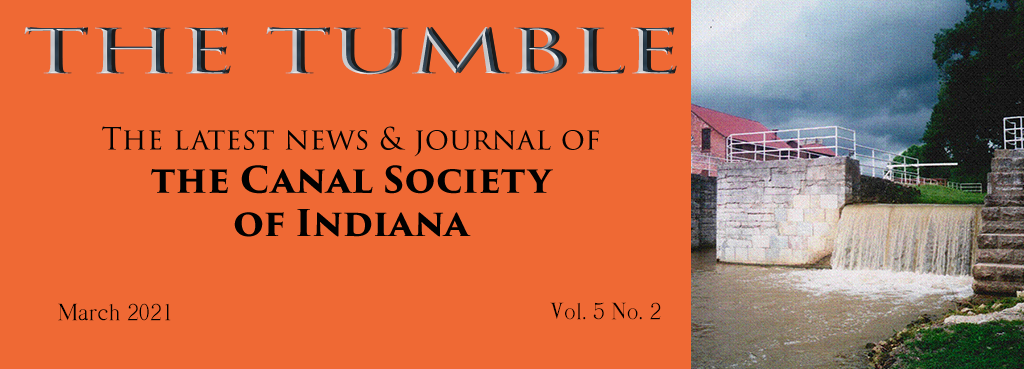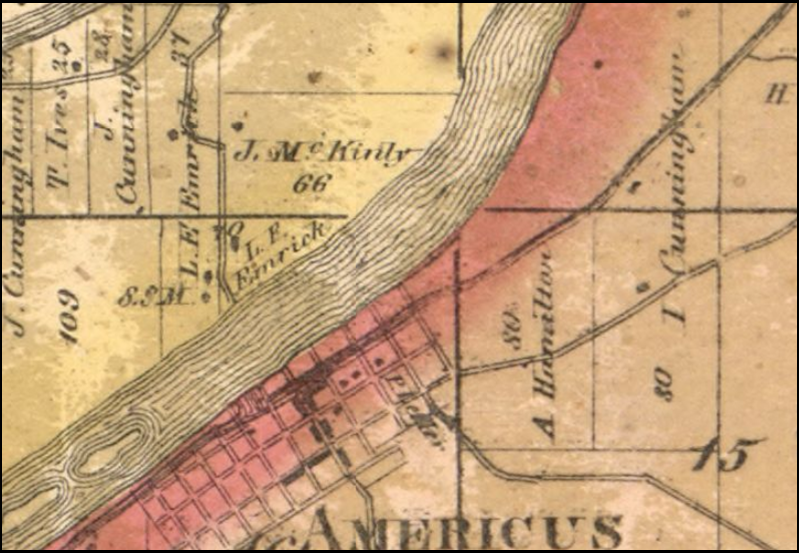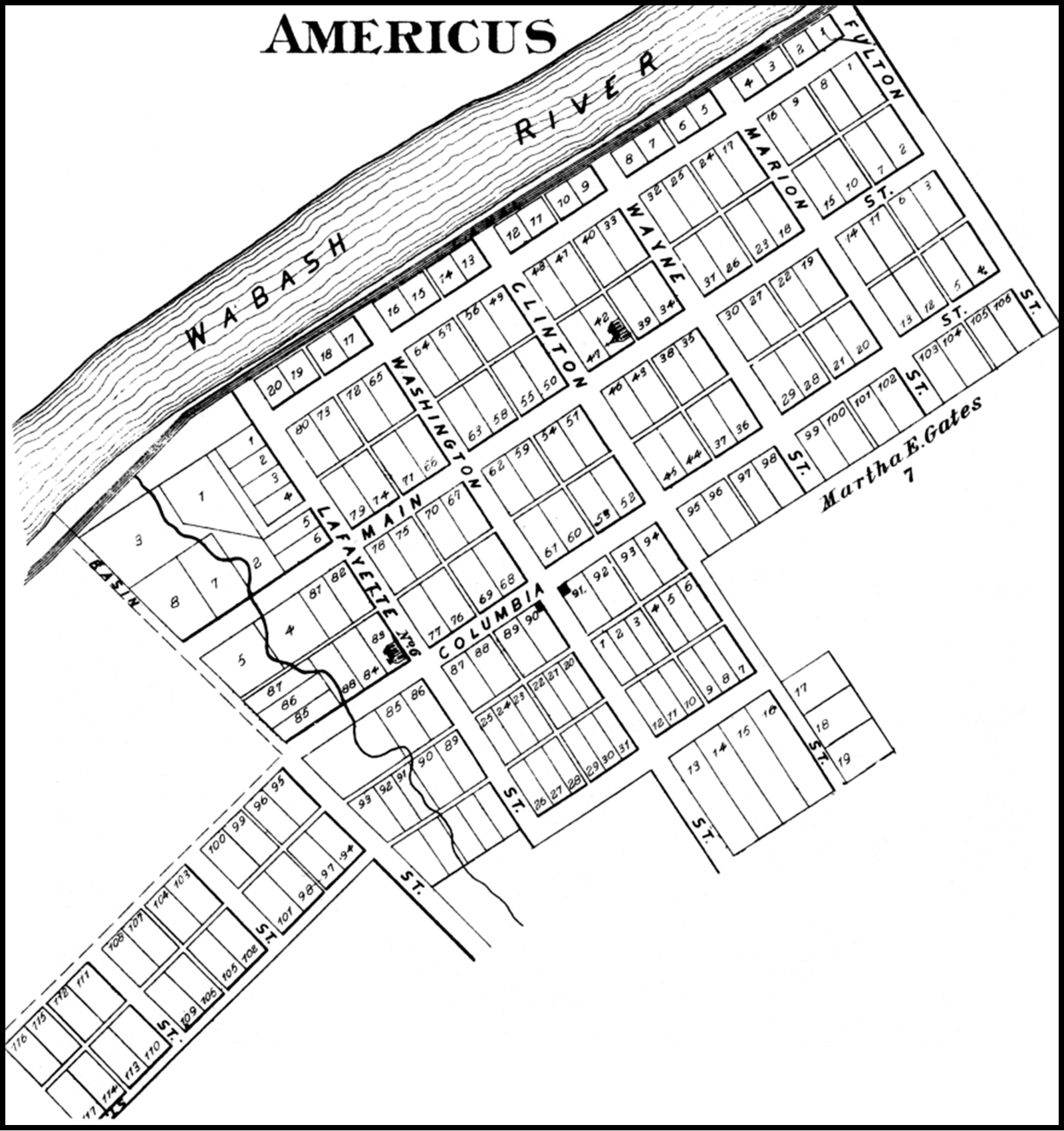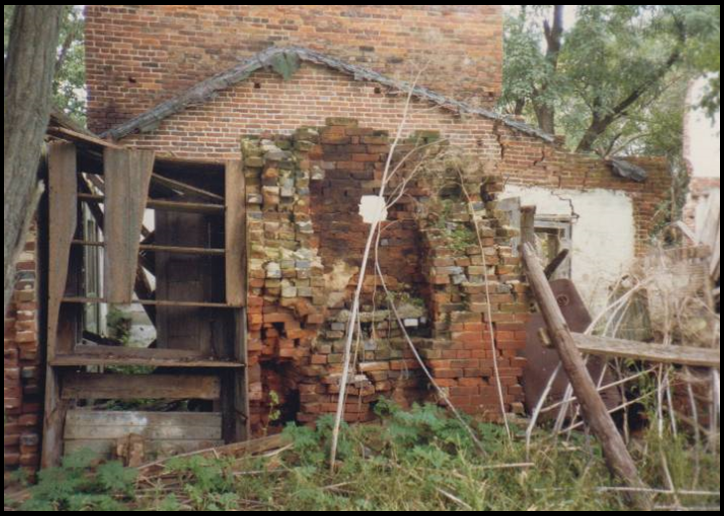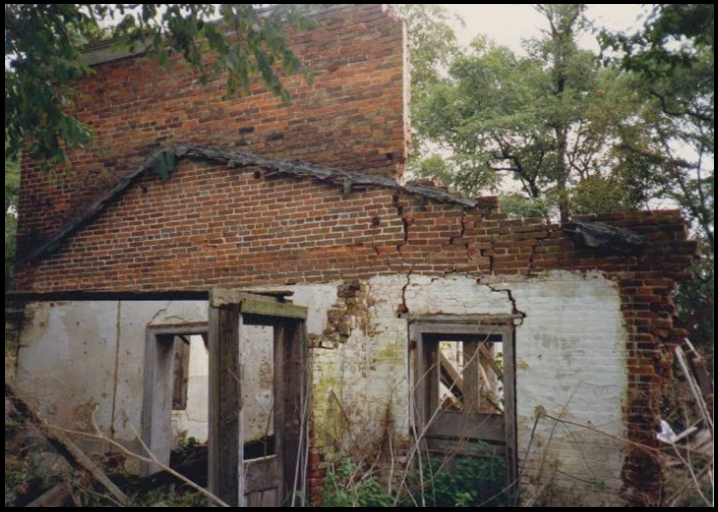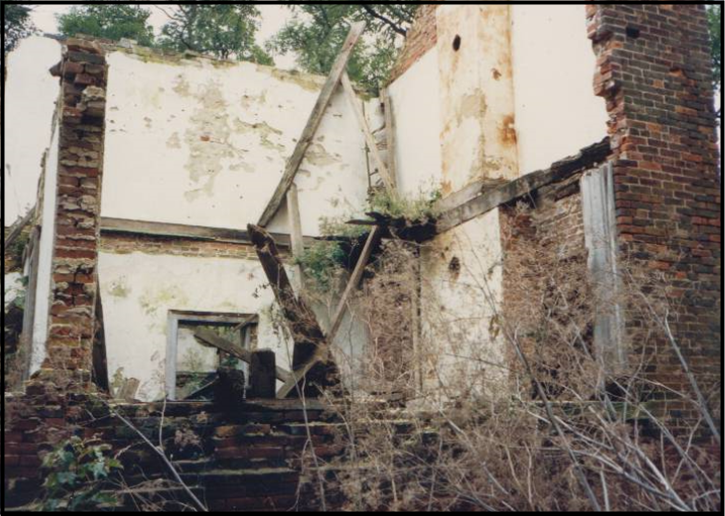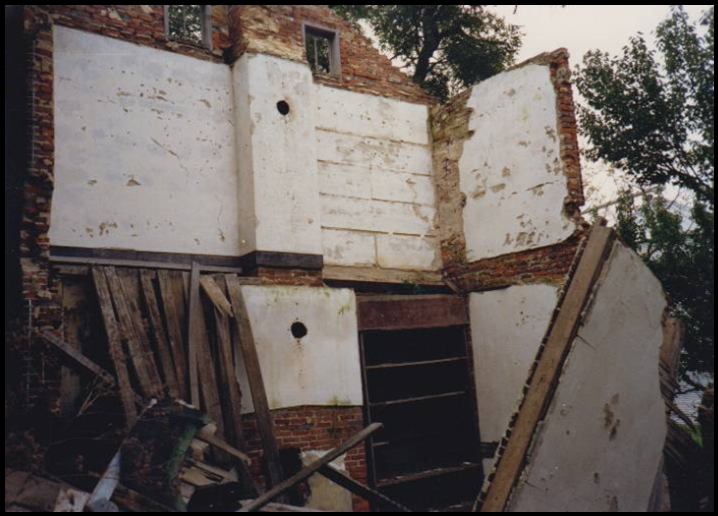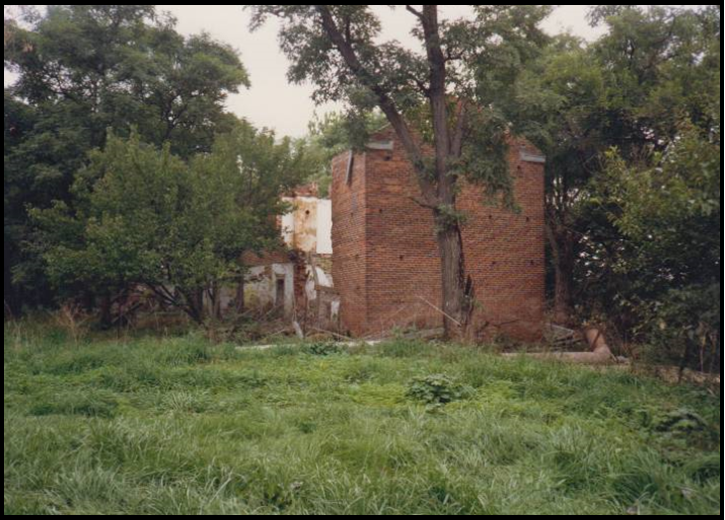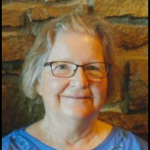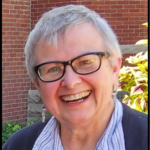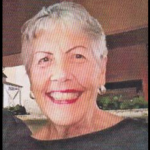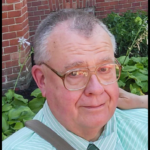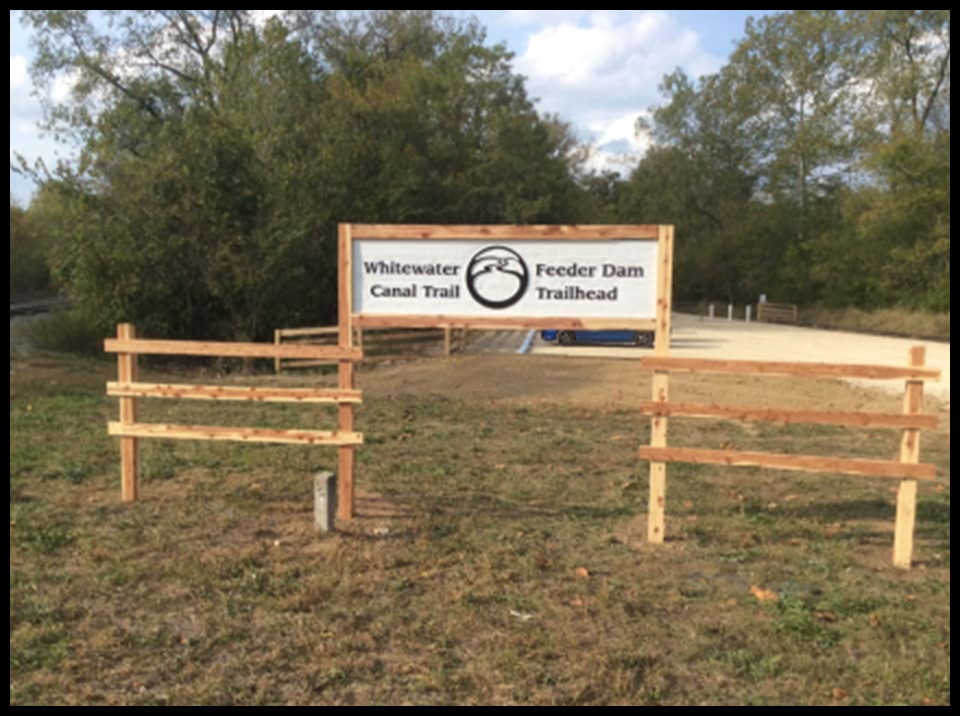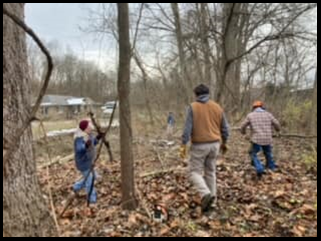Index:
Debating Canals Over Railroads
By Carolyn Schmidt
In December 1869 the Constitutional Convention of the State of Illinois convened at Springfield to hold debates, some of which were in regards to the Illinois & Michigan Canal and the Illinois River. Many of the speakers favored closing up these works, some wished to lease them, or let them to individual companies, under proper restrictions, that they might build them up, control and manage them.
They debated many of the major U.S. canals and one man even said that they were all failures and that the railroads had devoured New York’s canals. This led to more debates about the success of the Erie Canal of New York.

Then on January 27, 1870, Mr. Medill stood up and addressed the Chairman about Ohio and Indiana canals as follows: “And now let me say a word with regard to the Ohio and Indiana canals. I first lived in the State of Ohio forty years ago, and continued there for twenty-five years—grew up, man and boy, in the midst of the Ohio canal system and the Indiana canal system. I remember, and know all about them, and their effects on the welfare of the people of those States.
“When my father’s family first moved to Ohio, the Ohio [Ohio & Erie] canal; was not finished, but everybody was on the qui vive at the time for the expected benefits that would grow out of the completion of that little ditch, running from Cleveland to Portsmouth. Another was commenced shortly afterwards, running from Toledo to Cincinnati [Miami & Erie Canal]. I remember hearing the old farmers, a thousand times, tell of the hardships and poverty they had passed through and endured, during the years before that little canal was constructed; when they had to wagon their grain to the Lake, one hundred miles, or to Pittsburg, one hundred miles, where it had to be again portaged over the Alleghany mountains. This was the time when wheat sold in Ohio for twenty-five or thirty cents a bushel; when coffee cost fifty cents per pound, and salt cost twice as much per pound as wheat brought in exchange for it. Those were times which, if they did not try men’s souls, tried their patience and endurance. Many things were suffered that made life hard and unpleasant, if not unendurable.
“That canal cost Ohio five and a half millions of dollars, and it continued in the possession of the State until a few years ago. Within the first ten or fifteen years of its existence it nearly paid the interest on its construction; afterwards it yielded but little revenue; yet I can assure the Convention, from personal knowledge of the facts, and other gentlemen on this floor, who are Ohioans, will back me in the assertion, that that canal reimbursed the people of the State of Ohio, in the increase of the value of property and the products of the farm and in the comforts of daily life, ten, yes, twenty times the money it ever cost to construct it. Even admitting that all the capital used to build it was sunk and lost, it developed the State through two or three entire tiers of counties, from the lake to the river, a distance of two hundred and fifty or two hundred and seventy miles. The western canal, from Toledo to Cincinnati, produced a like result in the portion of the State, These and some lateral canals and slack water, constructed to connect with them, developed Ohio—brought the State into connection with New York, and gave her the first impulse in that mighty progress, which she made between 1830 and 1850, rendering her the empire State of the west, adding to the value of the taxable property hundreds of millions of dollars, doubling and perhaps trebling her population.
“I cannot sit here patiently and hear those little ditches that floated canal boats of only forty-five tons burden, spoken of disparagingly, for they were worth almost, I was going to say, their weight in gold, to the people of that State.
“The building of the railroad system north and south, and east and west, and diagonally through the State of Ohio, took away a great deal of the business of the canals, cut off their passenger traffic and lighter freights, and restricted their business to grain, coal, oil, salt, fish, lumber and similar coarse articles. But they still carry a great deal of property, and act as a most salutary check on the railways. The railroads attempted to obtain possession of the Ohio canals some years ago, and there was a serious struggle in that State, as to whether whey should be allowed to buy the canals, at a very tempting price, or whether these ditches should remain within the control of the Legislature and the people.
“The good sense of the people prevailed, however, although the railroads almost secured possession of the public works. They “went through” the Legislature once or twice, as ours [Illinois’] have been gone through by railroads, on more than one occasion.
“They offered the State something like forty or fifty cents on the dollar, on the entire original cost, and proposed to do various things in regard to keeping them open; but the fears of the people were such, in regard to railroad rapacity, that they succeeded in preventing the Legislature from surrendering the public works to those corporations. But they leased them to a company on the condition that the State should have the control of the rates of tolls; that the tolls should never be above a certain low scale—too low to render them of much profit to the contractors. But the people get their profits in cheap freights, both on the canals and railways. The State is receiving no income of any account from the canals; nothing, in short, except the guarantee that they should be kept in good condition and repair, and be open to the use of all canal boatmen at the reduced rates of tolls fixed in the contract. The effect is, that those canals in Ohio, five or six hundred miles of which are still navigable, keep the railways of that State down to reasonable rates of freight on produce, coal, fish, salt, lumber, iron ore, and the thousand heavy articles that the railroads compete for. They are paying to the people to-day, as cheap channels of communication, and as regulators of railroad freight, a heavy interest upon the total cost of their original construction.
“Now sir, a word in regard to the Indiana canal. I remember going into that State, about the year 1846, on the Wabash [Wabash & Erie] canal, from Toledo to Lafayette. I recollect when that canal was finished to a point away down in the interior of the State. It never was completed to the Ohio river, as contemplated. It was short of water in the summer, below Lafayette, and was very hard to keep in repair. I remember there was a flood of people pouring into the State of Indiana by way of that canal from the lakes. Thousands and tens of thousands of new comers, at the time I was in Indiana, in 1846, had come thither on that despised ditch, and settled in the northern and western counties of the State, coming from Pennsylvania, New England, New York, and Ohio. The boats were filled to overflowing with all the immigrants that they could carry.
“That single canal, through the north of that State, during the few years that it was in good, navigable order, brought a hundred thousand or more population into the State, and has paid for itself several times, in the increased value of property and products, and Indiana can well afford to lose the original investment. But the north end of that canal is still serving a useful purpose as a railroad regulator. Indiana is not a canal-ruined state by any means, but is rich and powerful, and the foundation of her great prosperity was laid by the very ditch the gentlemen from Crawford (Mr. Allen) so terribly berates and denounces.
“But what is the immediate proposition before us? In effect, it is to prevent our Illinois canal from passing into the hands of the railroads. Mr. Chairman, the railways of the State of Illinois could well afford to pay twice, yea thrice all the money that has even been expended upon it to get uncontrolled possession of it. It is the only regulator upon them we have. It is the only real and reliable security in the future against railroad overcharges for freights. The gentleman from Crawford (Mr. Allen) expresses his hostility to railroad rapacity, and says that if he had the power he would do thus and so. He only echoes the feeling of a good many others on this floor; but have we the right to employ that power? At least I am not lawyer enough to see how it can be effectually employed to fix railroad freight and passenger tariffs by statute.
“I recollect last winter that the Legislature spent a month devising some means of restricting their railroads in their charges. The best lawyers in both houses—the best lawyers out of both houses, were consulted and they were utterly unable to devise a practical, working, efficient scheme to hold those railroads down to proper charges. Although the Legislature passed an act it has been of no value whatever, and it might as well be repealed by the next Legislature. It is an abortion, and has done more harm than good. And I gravely doubt whether it is in the wisdom of this Convention to devise any constitutional provision to compel and effect a reduction of railroad charges, that will hold water in the supreme court of the United States, or even of Illinois. Then let us not fritter way what check and control over them the canal and the Illinois river gives our people, by leaving it in the power of the Legislature to sell these water improvements to the railroads.”
Adjournment was requested and the meeting adjourned for an hour and forty-five minutes.
Mr. Medill’s testimony supports what the Canal Society of Indiana believes when people say Indiana’s canals bankrupted the state. Not only was the canal debt renegotiated with the bond holders, the benefits the canals brought to Indiana outweighed their cost. Mr. Medill does an excellent job of reporting these benefits.
Source:
“Debates and Proceedings of the Constitutional Convention of the State of Illinois, Convened at the city of Springfield, Tuesday, December 13, 1869. Volume 1. Springfield, IL/E. L Merritt & Brother, Printers to the Convention, 1870.
The Americus Inn, Springhouse and Dam
By Carolyn Schmidt
The original 1827 Federal Land Grant for the Wabash & Erie Canal extended from the Tippecanoe River in Indiana to the Auglaize River at Defiance, Ohio. William Digby, a colorful, card playing gambler who was the founder of Lafayette in 1825, noted that the western terminus of this canal “had bright prospects of becoming the largest place within Tippecanoe county.” He purchased 80 acres of land and platted the town of Americus at this location in 1832. He planned to make it the county seat. At first “real estate took on fabulous prices and mercantile pursuits were lively at that point” according to Past and Present of Tippecanoe County, Indiana. A turning basin for the canal was located between Main street and the canal and between Lafayette and Basin streets. On December 20, 1833 a post office was established that eventually closed on October 15, 1902.

Illustrated Historical Atlas of the State of Indiana. Chicago, IL: Baskin Forster & Co., 1876
However, when the actual canal survey was taken, they passed through Americus and went as far as Lafayette, which was the head of steamboat navigation. David Burr, Samuel Lewis and J. B. Johnson, Wabash & Erie Canal commissioners, submitted a report of the survey to James Gregory, the Speaker of the House of Representative, as follows:
Sir.—In obedience to the resolution of the House of Representatives of December the 30th, 1834, the undersigned have the honor to state, that in order to make examinations of such subjects as were connected with, and dependent on the termination of the Wabash and Erie canal, near the mouth of the Tippecanoe, it became necessary to extend the Wabash surveys below the Tippecanoe and Wild-Cat rivers; and being in the vicinity, these surveys were taken to Lafayette. Indiana Senate Journal 1834-35. Vol. 19.
The report goes on to describe the route of the survey below the land grant at Americus to Lafayette on the south side of the Wabash River. It reported what the proposed extension of the canal would cost.
It was decided to extend the canal to Lafayette. On January 27, 1836 Governor Noah Noble signed into law the Indiana Mammoth Internal Improvement Bill that changed the terminus to Lafayette. “The trade was diverted and Americus lapsed into a mere hamlet with hopes forever blighted per force of circumstances.” In 1909 its population was about forty people.
John Cunningham, who had five canal boats on the Miami & Erie Canal before coming to Indiana, had purchased 142 acres on October 6, 1830 in township 24 N Range 3 W in the southwest fraction of Section 10. This was located west of Highway 25 and approximately 1/5 mile south of the highway’s junction with County Road 800 North. There he built his homestead. Later he turned his home into a Canal Inn and built a springhouse. The inn was made of brick, two stories tall, and measured approximately 40 by 80 feet. In the rear of the inn was a small addition which extended back another 15 to 20 feet that was one story tall.
In June 1974, three members of the Tippecanoe County Historical Association’s staff took a field trip in the northeastern part of Tippecanoe County to look at a portion of the Wabash & Erie Canal, some of which was still watered. Besides describing the condition of the canal at that time, they recorded the following about the Americus Inn in a report on July 11, 1975:
“The Inn is in very bad condition with most of the glass broken out of the windows and holes or openings in the walls at various places. At one point you may observe the second floor of the Inn sagging considerably, thus making the safety of entering the building quite doubtful. In the main entrance hall you can see what is left of a circular stairway leading from the hall to the second story. The banister has been removed, but the stubs of the railings are visible. Down the slope beyond the Inn to the southwest is a dam and springhouse. The springhouse is made of bricks, which are extremely red in color. I have never seen bricks quite this shade of red and would guess that they were brought in on the canal, from some distant location. [This could be true if the springhouse was built after 1840 when the canal reached Americus.] Next to the springhouse is a large concrete dam, which apparently fed water into the springhouse trough. The dam has since been demolished to the extent that water now flows through quite easily, but one can see the remains of either end of the structure. Lyda Hilt said that a road led back to the Inn and proceeded on to the springhouse where it went under an overhanging porch and stopped. Mrs. Hilt had visited this spot a few years earlier at which time the springhouse and the Inn were in much better condition. John Harris, Director”
The Americus Inn was visited in 1991 by Dan McCain and Bob & Carolyn Schmidt. Bob took these photos of the inn at that time. Later the ruins posed such danger to those living in the area that it was razed in 1994.
Americus had the reputation of a haven for bootleggers in the 1920s. A gas station that reportedly housed a still once stood where the present Americus Restaurant is located. As soon as prohibition was over, G. F. Higendorf opened a tavern on the spot. For the past 39 years Dick Roberts has operated the Americus Restaurant, which specializes in fried fish, at this place.
The July 1, 2019 U.S. Federal Census shows Americus with a population of 461. Although it did not become extinct, Digby’s dream of it becoming a major city never happened. His gamble didn’t pay off this time.
Sources:
Castaldi, Thomas E. Wabash & Erie Canal Notebook II: Cass, Carroll and Tippecanoe Counties. Columbia City, IN: Hinen Printing, 1998.
DeHart, General R. P. Past and Present of Tippecanoe County, Indiana. Indianapolis, IN: b. F. Bowen & Company, Publishers, 1909.
Illustrated Historical Atlas of the State of Indiana. Chicago, IL: Baskin Forster & Co., 1876
Kingman Bros. Atlas, 1878.
Titus, C. O. 1866 Map of Tippecanoe County.
“Wabash & Erie Canal Bed Sections 1,2, and 11, Washington Township, Tippecanoe County, Indiana” Report from John Harris, etc. of the Tippecanoe County Historical Association, 1975.
www.city-data.com/city/Americus-Indiana.html
Josh Billings On The Mule
While going through CSI files during the pandemic last spring I ran across this article about a mule, the main motive force on our canals. It was written by Henry Wheeler Shaw, an American humorist, who writes under the pen name of Josh Billings. His book, Josh Billings-Hiz Sayings, was published in 1866 by Carleton, Publisher, 413 Broadway, New York. It is illustrated with cartoons. However, since there was no cartoon of a mule with this short article, I have added one. Carolyn Schmidt
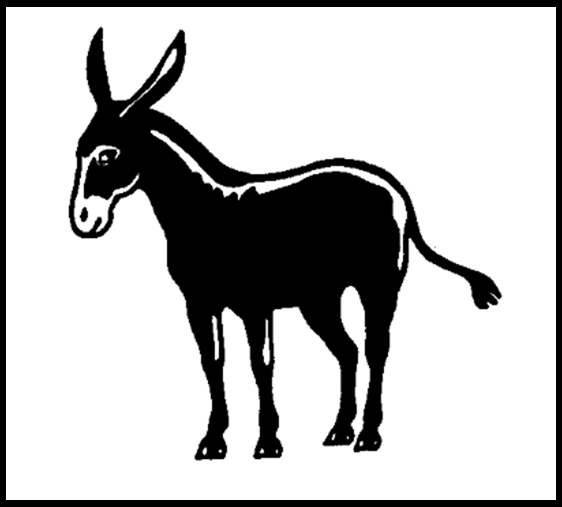
The mule is haf hoss, and haf Jackass, and then kums tu a full stop, natur discovering her mistake. Tha weigh more akordin tu their heft, than enny othe kreetur, except a crowbar. Tha kant hear enny quicker, nor further than the hoss, yet their ears are big enuff for show shoes. You kan trust them with enny one whose life aint worth enny more than the mules. The only wa tu keep them into a paster, is tu turn them into a medder jineing, and let them jump out. Tha are reddy for use, just as soon as they will du tu abuse. Tha haint got enny friends, and will live on huckel berry brush, with an occasional chanse at Kanada thissels. Tha are a modern invenshun, I don’t think the Bible deludes to them at tall. Tha sel for more money than enny other domestick animile. Yu kant tell their age by looking into their mouth, enny more than you kould a Mexican cannons. Tha never hav no disease that a good club wont heal. If tha ever die tha must kum rite tu life agin, for I never herd nobody sa “ded mule.” Tha are like sum men, very corrupt at harte; ive known then tu be good mules for 6 months, just to git a good chanse to kick sumbody. I never owned one, nor never mean to, unless there is a United Staits law passed, requiring it. The only reason why tha are pashunt, is because tha are ashamed ov themselves. I have seen eddikated mules in a sirkus. Tha kould kick, and bite, tremenjis. I would not sa what I am forced tu sa agaist the mule, if his birth want an outrage, and man want tu blame for it. Enny man who is willing tu drive a mule, ought to be exempt by law from running for the legislatur. Tha are the strongest creeturs on earth, and heaviest, according tu their sise; I herd tell ov one who fell oph from the tow path, on the Eri kanawl, and sunk as soon as he touched bottom, but he kept rite on towing the boat tu the nex stashum, breathing thru his ears, which stuck out ov the water about 2 feet 6 inches; I didn’t see this did, but an auctioneer told me ov it, and I never knew an auctioneer tu lie unless it was absolutely convenient.
Josh Billings – Hiz Sayings Henry Wheeler Shaw, Josh Billings was the pen name of 19th-century American humorist Henry Wheeler Shaw This ebook presents «Josh Billings – Hiz Sayings», from Henry Wheeler Shaw.
Benjamin Mariner
Find-A-Grave: 49369369
By Carolyn Schmidt
Benjamin Mariner is from a line of Mariners who were Irish, moved to England, and then to the United States where they settled in Sussex county, Delaware. Benjamin was born in Sussex county on December 16, 1807. When he was ten years old construction began on the Erie Canal in Rome, New York, on July 4, 1817. Much of this canal was built by Irish immigrants. It was completed in 1825.
Ground was broken for the Wabash & Erie Canal in Fort Wayne, Allen county, Indiana, on February 22, 1832. Construction began toward Huntington, Indiana. On May 4, 1834, the first contracts for construction of the Wabash & Erie Canal in Wabash county were let at the house of Colonel Burr in the new town of Wabash, which he had platted the month before in association with Col. Hugh Hanna. At the same time the first public sale of town lots was held.
In the History of Wabash County Indiana published in 1914 it states: “A large number of persons were present to bid for the construction of the various sections [of the canal]. The contract for building the section adjacent to Wabash, as well as for the construction of the lock, was awarded to [Lewis] Meyers & [Lemuel G.] Jones The next section was eventually built by Benjamin Mariner [he subcontracted for this section], and contracts for adjoining sections were given to Thomas Hayes and William Terrell, both of Pennsylvania. Lewis Meyers, one of the contractors on the first section, died before the work was completed; the lock was built by the partner of the deceased, Mr. Jones, assisted by David and Jacob D. Cassatt, father and son. Thus two other good citizens first came into prominence through their work on the Wabash & Erie Canal. From the lock to the stone bluff the canal was completed by Zera Sutherland.”
The earlier History of Wabash County Indiana published in 1884 says: “The contractors commenced work immediately after preliminaries had been settled, and erelong the line was dotted with cabins and shanties for the laborers who came in great numbers to engage in the new enterprise. While the work was in progress in the county, some time in the year succeeding, an old feud between the two principal classes of the laborers was revived and well-nigh culminated in bloodshed. The interposition of the military arm of the State and the wise counsels of the Superintendents of the work, however, prevented the meeing of the belligerents, and the work went on again as usual, except that there was greater vigilance observed to prevent the coming together of the warlike clans.”
Although we do not know if Benjamin was in Wabash at the time the contracts were let, he subcontracted for the canal section and began construction around that time. From then on he made his home in Wabash.
On July 3, 1841, Benjamin was married to Elizabeth Donoban (Donevan), in Carroll county, Indiana. Like Benjamin, she had been born in Sussex county, Delaware, on October 6, 1821. He was about 13 years older than Elizabeth. After their marriage they bought a large plot of ground at the corner of Wabash St. and Harrison Ave. in Wabash. It included where the Honeywell house at 720 N. Wabash St. is now located. There they built their home and reared their children: Mary Jane, twins Napoleon Tobias & Benjamin Thaddeus, Elizabeth, Julia, James, John D. (listed on one census as Marion), and Frank.
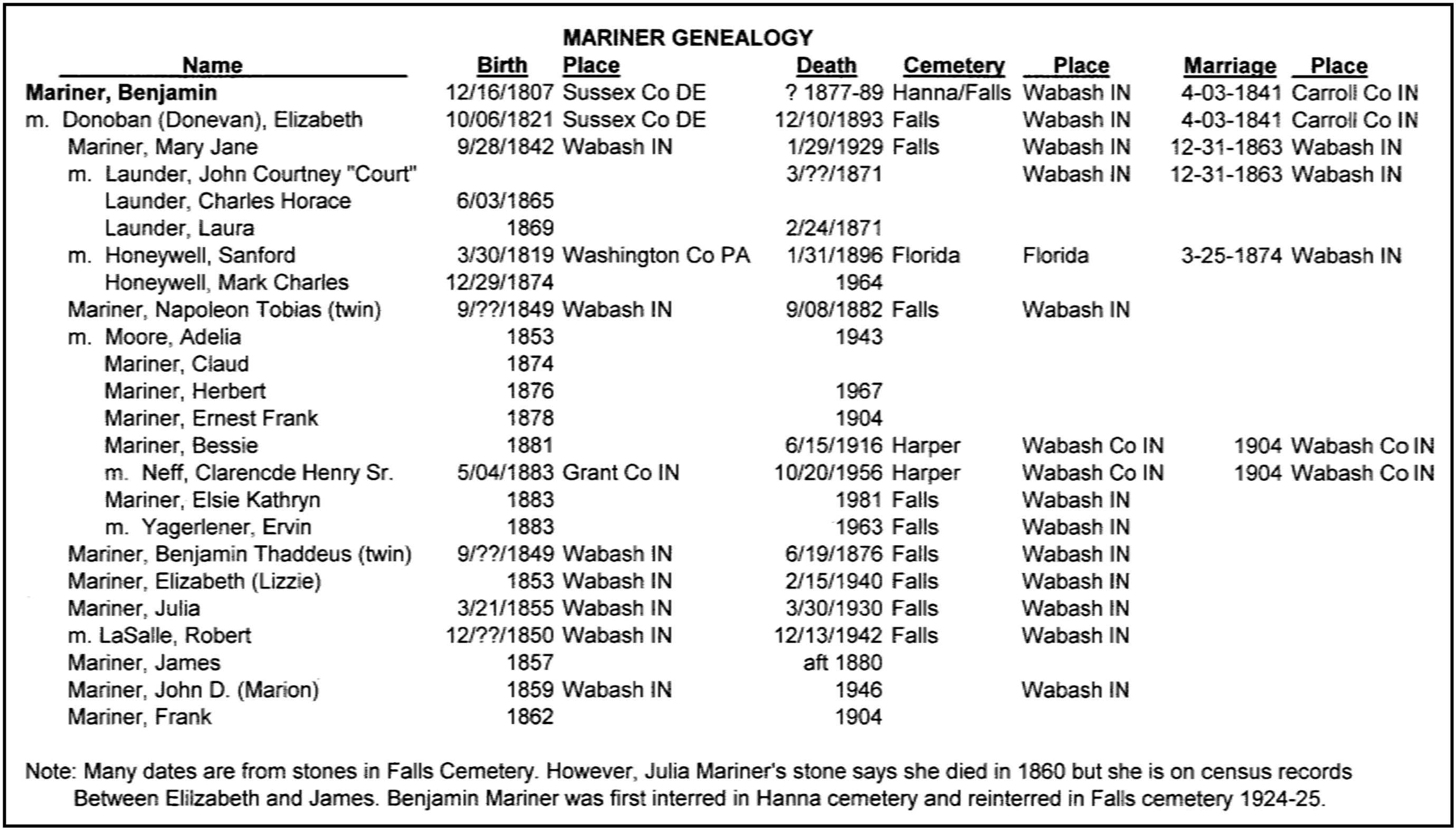
The 1850 Federal Census shows John as a laborer, the 1860 census says he a boatman, and the 1870 census lists him as a lumber dealer. He began working on canal boats traveling between Toledo, Ohio and Lafayette, Indiana, after the Wabash & Erie Canal was opened in 1843. He eventually became a captain on one of these boats.
In 1853 Sanford Honeywell came to Wabash as a millwright with his wife America. He erected the first mill in Wabash county. Benjamin Mariner operated a saw mill in partnership with Sanford, who was to become his future son-in-law. Sanford, after also inventing a cider mill, abandoned his career as a millwright to devote his time to farming. That lasted until 1870 when he sold his farm and began manufacturing cider. Its capacity was 500 gallons a day. Later Benjamin became an orchardist, probably is association with Sanford’s cider mill.
On October 7, 1854 the shocking murders of Aaron French, his wife and five children were committed five miles west of Wabash by John Hubbard, but at the time were explained away by Hubbard saying the Frenches had gone to Iowa. On December 1854, Edward Boyle, a laborer on the canal who had boarded with the Hubbard family, went missing. Just a day or two before, he was known to have had $400-$500 in his possession. On March 23, 1855, when the water was drawn down on the canal level below the lock that was opposite the Hubbard residence, the body of a man was found. A Coroner’s jury composed of Mason I. Thomas, Daniel H. Tyner, Hezekiah Caldwell, James H. Johnson, Benjamin Mariner and Jeremiah P. Flynn, found that the person had come to his death by violence, by blows inflicted on his head and with a knife or other sharp instrument sufficient to produce death. The body was buried. It was removed from the grave on March 26 and recognized as Boyle. With the disappearance of the French family, the death of Boyle, and the usually poor Hubbard seeming to have lots of money after Boyle disappeared, Hubbard and his wife were arrested and convicted, he for the murder and she as an accessory to the murder.
On July 11, 1863, in the middle of John Hunt Morgan’s Raid (July 8-14) in southern Indiana, a meeting was called at the Wabash county courthouse at 10 a.m. to sign up volunteers. The courtroom was soon filled to overflowing. After selecting a chairman, a roll of paper was circulation for signatures.
Article I The undersigned associate themselves into a military company, the persons composing it being over 45 years of age, and exempt from military duty.
Article II We do hereby—each member for himself—voluntarily waive all rights of exemption and tender our services and present a company that shall be held and holds itself, as part of the Indiana Legion, subject to the order of the Governor for all military purposes.
Article III This company pledges itself to loyalty, and heartily supports the Union and the Government.
Eighty-six signatures were obtained. Benjamin Mariner, age 56, was number 81. After the organization of the company, they elected their officers, and its services were immediately tendered to the State for the suppression of this raid. There is but a single order standing on the roll of the company, as follows: Ordered that the company meet at the court house square, at 7 p.m. on each evening for roll call and drill and await further orders.
Governor Oliver P. Morton’s address of July 15, 1863, to the legion and the “minute-men” notifying them that their services for the present were not further needed, relieved the “Wabash Pioneers” from further duty. Since that time they have always felt a sense of satisfaction in knowing that they composed a part of the 60,000+ men who tendered their services for the suppression of the “Morgan raid.” Of the number of those who composed the rank and file of the “Wabash Pioneers,” several of the members were between the years of sixty and seventy years of age.
In December 1863 Benjamin’s daughter Mary Jane Mariner, married John Courtney “Court” Launder, a harness maker. They had two children Charles Horace and Laura Launder. Launa died about 2 years later and then Court died in 1871 leaving Mary Jane a widow at age 29. Benjamin gave her a lot on his property where she built a small home for she and her son.
In 1873 Sanford Honeywell’s wife, America, died. He knew Benjamin’s daughter, Mary Jane Mariner, through their business partnership and they were married on March 25, 1874, in Wabash. They had one son, Mark Charles Honeywell, who is Benjamin’s grandson.
Benjamin Mariner passed away sometime between 1877-1889 in Wabash, Indiana. He was first buried in the Hanna Cemetery and then reburied in Falls Cemetery in Sec. E, Lot 67, Space 2/3 that is unmarked. His wife died on December 10, 1893 and was buried in Falls Cemetery in Sec. E Lot 7.
The Honeywell House stands on land once owned by Benjamin Mariner. The Honeywells spent their winters is Deland, Florida, and summers in Wabash until Sanford died in Florida in 1896. Mary Jane’s son, Horace, who had lost his wife and daughter, lived with her in the home she maintained. She also carried on the family business until her death in 1929.

Mary Jane and Sanford’s son, Mark Honeywell, went to college in Deland, Florida. There he began growing oranges and had a brokerage business. He married Olive Lutz in 1899. Later in their marriage they moved from Florida back to Wabash. He was in the heating and contracting business; was president of Honeywell Specialty Co. (later Honeywell Specialties); merged with Minneapolis Honeywell where he acted as president and later chairman of the board; and then the company became Honeywell, Inc. He had the Honeywell Memorial Community Center built in Wabash in honor of his parents, Sanford and Mary Jane, and his wife, Olive, who died in February 1939. In 1942 he married Eugenia Hubbard Nixon, the daughter of Wallace and Della Hubbard of Clay City and the widow of Don Morrison Nixon, a Wabash newspaperman.
Sources:
Ancestry.com: Family Member Trees
Benjamin Mariner
Elizabeth Mariner
Napoleon Mariner
Mary Jane Mariner
Death certificate of Mary Jane (Mariner) Honeywell
Find-A-Grave:
# 49369369 Benjamin Mariner
# 41945619 Elizabeth Mariner
Helm, History of Wabash County, Indiana. Chicago, IL: John Morris Printer, 1884.
Robertson, Linda. Wabash County History Bicentennial Edition 1976. Marceline, MO: Walsworth Publishing Company, Inc. 1976.
United States Federal Census: 1850, 1860, 1870
Weesner, Clarkson W. History of Wabash County, Indiana. Chicago, IL: The Lewis Publishing Company, 1914.
Woodward, Ronald L. Obituaries Wabash County Indiana 1873-1899. Wabash, IN: Wabash Carnegie Public Library, 1984.
Wabash & Erie Canal Certificate

STATE OF INDIANA.
No. 24 UNITED STATES OF AMERICA. $500
FIVE PER CENT. DEFERRED CANAL STOCK.
Issued on account of Wabash and Erie Canal Bonds,
Under two acts of the General Assembly of the State of Indiana, entitled “An act to provide for the funded debt of the State of Indiana, and, for the completion of the Wabash and Erie Canal to Evansville,” passed 19th January 1849, and “An act supplementary to” said act, passed 27th January, 1847.
Be it Known, That the Wabash and Erie Canal, and al tolls, lands and effects appertaining thereto, from the State line to Evansville, on the Ohio River, and all the property of the State of Indiana therein, are irrevocably pledged to Otley, Port & Whiting or assigns, for the sum of Five Hundred Dollars, (being stock issued for Principal, under foregoing acts,) with interest upon the same at the rate of FIVE PER CENT, per annum, from the first day of January, 1847, payable semi-annually in the City of New York, by the Trustees of said Canal, on the first days of January and July in each year, as prescribed in the acts aforesaid—such payments of interest, however, to be contingent upon the funds realized from time to time from the Canal, applicable thereto, and the completion of the Canal to Evansville, as set forth in said acts.
This debt is duly recorded, and is transferable only in the City of New York, in books provided for that purpose by the State, by the holder hereof, or their duly constituted Attorney, according to such rules and forms as are or may be prescribed for that purpose: —an endorsement on the back hereof, by the holder, in the presence of two witnesses, being in all cases a sufficient Power of Attorney to authorize a transfer, upon a surrender and cancellation of this Certificate.
In Witness whereof, The Treasurer and Auditor of State of said State of Indiana, have hereunto subscribed their names and affixed the Seal of said State, at Indianapolis, this Thirtieth day of August 1847.
COUNTERSIGNED:
- G. Bright, Agent of State Sam Hannah TREASURER.
By Jas Collins J D. Maguire AUDITOR.
Back: For Value Received, hereby assign the within Certificate of Stock to __________this ______ day of _____ 18___ ________________________ Witnesses: ___________________
Sarah Coomey Traveled the W & E Canal
The following article by Zelda (O’Farrell) Burke was found amid the files of Mark Smith, Carroll County Historian and CSI member from Brookston, Indiana, who sent it to CSI headquarters.
The Great Famine hit Ireland in 1845. It was caused by a blight in the potatoes. The Irish people ate potatoes three meals a day. By 1846, thousands weree dying from hunger. So many people died in the cities, that each morning someone with a wheel-barrow came to pick up those who died overnight. A man with a horse and two-wheel cart hauled them away. Many caskets were placed, one on top of the other, in cemeteries.
In 1846, Sarah Ann, age 16, and Henry French, age 14, left their home in French Park, County Roscommon, Ireland, for New York City. This trip took a month.
Later, on the trip, Henry became ill. There was a doctor on board, but Sarah had no money. A man by the name of John Burke offered her money if she promised to pay him back after they were in New York. She accepted, and Henry recovered.
During the long voyage, Henry played “Button, Button, Who’s Got the Button” until all the buttons were gone off his clothes. When they arrived in New York, Sarah went to find something to hold Henry’s clothes. He was to watch a trunk, full of clothes their mother had made. When Sarah came back, the trunk was gone. All they had were the clothes on their backs.
Many Irish on the Ship were headed for Syracuse, New York, because many Irish had already settled there. The group traveled the Hudson River to Albany, then took the New York State Erie Canal to Syracuse, settling in Manlius, a suburb of Syracuse. Sarah, Henry and John Burke roomed in homes about a mile apart from each other.
John Burke received his Declaration of Intention in Syracuse, March 12, 1846. Henry later married and stayed in New York.
Sarah’s intentions were to go to Carroll County, Indiana where her sister, Mavis Speece, was residing near Lockport. Mavis had married Lewis Speece, who was a ship owner on the Wabash and Erie Canal and traveled other waters.
Sarah left Syracuse after she’d paid her debt to John Burke, and had enough money to get to Carroll County. She did not tell John Burke she was leaving. He had become fond of her and decided to follow her.
Sarah may have taken the stage coach route from Syracuse to Buffalo because she told of the ride being so bumpy. It was a much shorter and cheaper route on what is now U.S. Hwy. 5 to Auburn, then U. S. Hwy. 20 to Buffalo. She caught a steamer at Buffalo, on a destination to Maumee, Ohio. From Maumee, Sarah traveled the Wabash and Erie Canal to Lockport, Indiana.
Three years later, in 1853, Sarah and John Burke had a new baby girl, named Mary Ann. When Mary Ann was two years old, John Burke died suddenly of a heart attack.
In 1867 Sarah married David Coomey. They lived on Wells Street near the Wabash and Erie Canal. Sarah died in 1913, age 83 years.
Further information about Sarah Ann, French, Burke, Coomey:
Her estimated date of birth is July 1830
She was 69 years old in the 1900 U.S. Federal Census, living in Deer Creek, Carroll County, Indiana. It lists her year of immigration as 1849, which is different from the article, and says she had been in the U.S. for 51 years.
She had the following children:
Mary Ann Burke 1853
Michael Coomey 1859
James Coomey 1861
David Coomey 1864
Sarah Ann Coomey 1866, January 1 (Married Joseph Kurzweil), died Nov. 16, 1949 age 82-83
Catherine Coomey 1869
David Coomey, her second husband, died before 1900 and left her a widow.
Her death certificate says she died August 10, 1913, age 83, in Delphi, Indiana.
Ohio & Erie Opening in Newark Letter
Neil Sowards, CSI member from Ft. Wayne, found a letter on E-bay that had information about the Ohio & Erie Canal. It was dated April 21, 1832 and was a stampless letter from Chillicothe, Ohio to Peabody Atkinson, Near Newark, Licking County, Ohio. The hand stamp on it was a partially clear double oval. It was mailed at the 10 rate and was heavily soiled. The content of the letter referred to waiting “for 3 or 4 days in order for the canal to get open to Newark. From all accounts I may wait as many & as many more. I have determined to wait no longer and shall start for Portsmouth in the morning…”

Day After Christmas Walk In Delphi

On Saturday, December 26, 2020, the Wabash & Erie Canal Association and Delphi Historic Trails held a free-to-the-public Day After
Christmas Walk, actually a one-mile stroll that explored the Red Bridge Settlement and the 1857 Harley lime kilns near the Canal Boat Warehouse
on the Wabash and Erie Canal in Delphi, Indiana.
On this nice day seventeen people followed Dan McCain to the various sites where he explained what they were and how they operated. Everyone wore masks and social distanced.
Canal Word Puzzles
Below are the names of those who correctly answered the weekly Canal Quotes or Word Search puzzles since the January 2021 issue of “The Tumble.”

Puzzle Solvers
Below are pictures of those CSI members who have sent in the most correct answers to the puzzles since last May.
Whitewater Canal Trail News
Whitewater Canal Trails constructed four very sturdy new bridges in 2020 to pass hikers over streams as they walk the trail.
They have begun the Metamora Extension Trail. They have also created a new parking lot at the Laurel Feeder Dam for the trailhead there. Hooray for volunteers!
On January 1, 2021 WWCT had planned a trail hike from 1-4 p.m. for those wishing to “Walk-Off the Holidays.” They were to meet at the Feeder Dam Trailhead located at Rt. 52 and Pennington Road in Metamora. Along the 1.9 mile crushed stone trail they were to visit two historic canal locks and walk through a quiet woodland setting along the Whitewater Canal and Feeder wearing masks and social distancing. Due to inclement weather the hike was cancelled.
Surprise for Whitewater Canal Trail

The Whitewater Canal Trail has received a very generous and unexpected donation of $700.000 from an anonymous donor that will enable the building of new trails to connect with the existing trail sections. When completed the 11-mile trail will run from the Yellow Bank Trailhead, through Metamora, all the way to the Laurel Feeder Dam. Hikers/bikers will be able to access historic canal structures and view the natural scenery unique to Indiana in the Whitewater Valley.
Members of WCT are anxious to begin working on completing the trail. If all goes well, the new trail should be completed this year.
This gift will be added to their other funds. WCT appreciates any donation, large or small, to help build and maintain the trail. It is collaborating with Indiana’s tourism board, historical and
 natural resources agencies, the economic development commission, local foundations, and private donors.
natural resources agencies, the economic development commission, local foundations, and private donors.
The Whitewater Canal Trial is listed on the National Register of Historic Places. The 15-mile section between the Laurel Feeder Dam and Brookville was placed on the list in December of 1968.
Shortly after learning of the gift to their organization, WCT members spent Saturday January 16, 2021 clearing up the area for the new trail. They are all volunteers and would appreciate help with this project. For more information, visit www.whitewatercanaltrail.com.
In Memoriam: Linn Wilbur Loomis
Linn Wilbur Loomis, age 80, passed away on Saturday December 12, 2020 at the Riverside Manor Home in Newcomerstown, Ohio. He was born in Cleveland, Ohio on December 19, 1939 to the late Willard and Lucille Loomis.

Linn was graduated from Grand Valley High School and Hiram College. He received a Master’s degree from Kent State University. He taught social studies in the Newcomerstown, Ohio schools from 1962-1989.
He worked at Roscoe Village as a tour guide for many years, and at the Longaberger Company until it closed. He attended Gospel Hill Ministry.
Linn was greatly interested in canals and, until his health declined, was very active in the American, Indiana, New York State, Ohio, and Virginia Canal Societies, as well as the Indiana Historical Society, Ohio Historical Society, Tuscarawas County Historical Society and Roscoe Village Foundation. Linn took the pictures to illustrate the two canal books and his memoir he authored and self-published: Then and Now-Ohio’s Canals, The Sandy and Beaver Canal and One Man’s Journey. He spoke about canals at various venues.
As a member of the Canal Society of Indiana, he attended many of its regular canal tours, donated an entire file drawer full of his folios of pictures he had taken of canal structures and canal signage, and donated several pieces of canal lock iron work to the canal museum in the Vinton House in Cambridge City, Indiana.
Linn is survived by his wife of 56 years, Sandra (Pollock) Loomis; a daughter, Jennifer Turner, of Reynoldsburg, Ohio; a son, David Loomis, of Newcomerstown; six grandchildren and one great-grandson.
A private graveside service was held at the Coshocton County Memory Gardens.
Donations may be made to the Crossroads Hospice, 3743 Boettler Oaks Drive, Suite E, Uniontown, Ohio 446855.
Welcome New Members
The Canal Society of Indiana has received the following new members who have joined at the $20 single/family rate unless otherwise noted.
Amrein, Steven & Deborah – Western Springs, Illinois
Dennis, J. W. – Rosedale, Indiana
Goedeke, Jerett – Antwerp, Ohio
McCandless, Brad & Brenda – Princeton, Indiana
Leonard, Craig — Ft. Wayne, Indiana
Ligget, Larry – Terre Haute, Indiana
Ligget, Kris – Terre Haute, Indiana
Linehan, Mark – Ft. Wayne, Indiana
Walter, Jamie – Covington, Indiana
Miami-Erie Canal Along Bike Path Gap
A 1.4 mile stretch of the Great Miami River Recreational Trail is finally under construction. This stretch costing $2.4 million will extend the trail from just east of Breiel Boulevard in Middletown, Ohio to Baxter Road in Franklin, Ohio along Ohio 73. The biggest part of the project is building a 7-foot-tall , 706-foot-long retaining wall between Ohio 73 and the Great Miami River. This section is along the Miami and Erie Canal north of the Middletown Dam Feeder Canal. This project is 100% federally funded and administered under contract by the Ohio Department of Transportation. An article about this project of closing the gap was sent to CSI headquarters from John Geyer of Hamilton, Ohio.
As can be seen from this article and the Whitewater Canal Trail news, hiking/biking paths along the old canal routes are popular and scenic. Old right-of-ways are being used for recreation.
News From The Past
These short articles were found while looking for topics for CSI’s daily “Day in Indiana History” E-mails to members. Many of them are reprints from other newspapers, which was a common practice in those days.
Indiana American, Brookville, Indiana
November 25, 1836
CELEBRATION.—Our citizens propose having another internal improvement celebration on the occasion of letting the canal contracts for this part of the route.
The arrangements are not yet made in full; governor Noble, lieutenant governor Wallace, and the canal commissioners and engineers will be invited to partake of a public dinner; and we hope to see our governor exhibit as much grace of physical power in commencing the great central canal he did of moral strength and wisdom of promoting the adoption of the great system of internal improvement. — Evansville Journal.
Richmond Palladium, Richmond, Indiana
November 3, 1838
THE CENTRAL CANAL—It is with much pleasure that we are enabled to announce to our readers, that the water will be let into that part of this great thoroughfare between this place and the first feeder dam north, about the 10th of this month. Cannot we celebrate this important event in a becoming manner? It will be that dawning of a bright and glorious era for Central Indiana, and it should not pass unobserved. We understand that a Canal Boat will be ready for the occasion, which will accommodate as many as wish to take a ride.
We understand that the Marion Guards will parade on the day the water shall be let in, and take a jaunt on the Canal. Let the citizens, generally, join them, and a pretty and becoming affair can be made of the occasion. — Ia. Journal.
Indiana State Sentinel, Indianapolis, Indiana
November 16, 1841
NEW YORK CANALS.
The following is the aggregate cost and income of the New York canals from the commencement of the system in 1817 to Sept. 30, 1840, as compiled by the N.Y. Times and Star, from official documents:

The above receipts include tolls, auction duty, salt duty, steamboat tax, sale of lands, water rents, premium on loans, interest on surplus, &c. &c. &c,
The Albany Argus of the 22d inst. says—
“The Commissioners of the Canal fund have issued notice for another loan of two hundred thousand dollars for repairing or improving the Chemung canal. In former times, under a democratic administration, all work done on a finished canal, was treated as a part of the current expenses of the year, and so reported to the legislature. The present policy is to create a new debt for lateral canals, and to report to the legislature the ordinary repairs, excluding all of an extraordinary character. In this way a heavy debt is accumulated for annual repairs of the Chemung and other lateral canals, and the payment for these repairs is thrown forward for 20 years. This is the only mode in which the present extravagant administration can bring the year about, even with the increased revenue of the Erie canal. There is another very important item, which ought to be charged to the annual expenses of supporting the public works. It is the amount paid for the depreciation of State credit. This is equal to about half a million annually, and this sum ought to be taken into the estimate, in making out the current budget.”
Indiana American, Brookville, Indiana
November 3, 1843
At a meeting of stockholders in the White Water Valley Canal Company, held in pursuance of a call of the Board of Directors, at Laurel, Franklin county, Ind. On Saturday the 28th of October, 1843, for the purpose of taking into consideration the propriety of paying out the residue of the stock in semi-annual instead of annual installments of one tenth each. Hon. D. Mount was called to preside, and M. J. Kelly appointed Secretary.
On motion of James Conwell, the Secretary read the orders of the Board of Directors calling the meeting and explaining its object.—Also a brief report from the Secretary of the Company, showing the state of its works, finances, &c.
On motion of George G. Shoup, Resolved, that we heartily approve of the recommendation of the Board of Directors to pay out stock in semi-annual instead of annual installments of one tenth each, and that we will second that recommendation by entering into the obligation proposed by them in that effect.
On motion the meeting appointed Messrs. Ferguson, Johnson and Conwell, a committee to report the name of a suitable resident stockholder of this county to be recommended as a candidate for the office of Director at the next annual election; which committee after a short absence reported the name of David Mount, who was unanimously recommended by the meeting.
- MOUNT, Pres. M. J. KeELLY, Sec.
The Wabash Courier, Terre Haute, Indiana
November 3, 1849
LETTING OF CONTRACTS On the Wabash and Erie Canal. THE undersigned Trustees of the Wabash and Erie Canal, will receive sealed proposals at Petersburg, Pike county, Indiana, on the 14th day of November next, for the construction of about 15¼ miles of said Canal, extending from Maysville to Petersburg. This division embraces a large proportion of the heaviest earth work on the canal, and is worthy the attention of contractors accustomed to heavy work. The line will be divided into sections suited to the shape and character of the ground, averaging near a half mile in length.
The superstructure of the Aqueduct over East Fork of White River will also be let. It is about 100 feet, sustained by timber arches and truss work, and enclosed from the weather.
The work will be ready for inspection for one week previous to the letting, and all necessary
information will be given by the resident Engineer. Bidders not known either to the Trustees, or to the Engineers, will be expected to enclose with their proposals, satisfactory testimonials as to character and qualifications.
CHARLES BUTLER,
- M. PUETT, Trustees of the Wabash and Erie Canal.
THOS. H. BLAKE.
Terre Haute, Ind. Sept. 19, 1842.
The Wabash Courier, Terre Haute, Indiana
November 3, 1849
REMARKS OF THOS. DOWLING, ESQ. At the W. & E. Canal Dinner, Oct. 25th.
Thos. Dowling being called up by the company, remarked that, laboring under a severe cold, he could not promise to say anything of interest, his voice being so completely out of tune as to sound harsh to those who listened. In response to the call, he would offer a few suggestions.
By the partiality of his fellow-citizens of Vigo, Mr. D. [Dowling] remarked, it was his good fortune to have some agency in the passage of the act providing for the funded debt of Indiana, and for the completion of the Wabash and Erie Canal, and he would say, with all humility, that he felt a greater pride in that agency than to have occupied a seat in bodies which the public regard of much higher prominence. In conjunction with faithful representatives and senators, he endeavored to do his duty, as one of the humblest of the advocates of that great measure, and now that it has so far proved successful he congratulated those assembled on an event so auspicious to every interest of our beloved State. Though the event to us is locally interesting, we should forget local interest in the more ennobling feeling of State pride—a pride having its origin in the gratifying satisfaction of restored prosperity at home and credit and consideration abroad. We, of Vigo, should say little of ourselves—because our immediate interests were involved in the question; but others were differently situated.—There were members of the Indiana Legislature who, having none of these local incentives to action, distinguished themselves by a faithful, manly, and energetic support of the measure; and it did him great pleasure to mention the name of HENRY SECREST, of Putnam; Dr. CROOKSHANK, of Franklin; and Mr. CARNAN, of Knox—all of whom, in sunshine and in storm, were foremost in the advocacy of the measure. Mr. D. paid a high tribute to Dr. Crookshank, who, on a particular occasion, saved the bill from impending defeat.
Mr. Dowling then proceeded, at some length, to speak of the difficulties surrounding the arrangement in New York after the bill had passed, the ordeal of the State Legislature, and remarked in substance; While the measure had friends at home, it had champions, able, sagacious in the great City of the Union.—There was a fraternal feeling of regard for the fair fame of Indiana in N. York, and Boston, and Philadelphia, and we had friends there, amongst a class of men, many of whom had never looked upon our smiling valleys and embryo cities. They were men of eminence and consideration at home—men of enlarged and expanding American hearts, who felt that we, as a portion of this great confederacy, formed some portion of American character and reputation abroad. They thought the State had made an honest effort to discharge her liabilities, and for months they labored to secure the success of the arrangement, and it is not saying too much to declare, that without their and all our efforts would have been abortive.
JAMES G. KING, long an eminent citizen of N. York, and now a member of Congress from New Jersey, is one of the gentlemen alluded to—a man distinguished alike by his public and private virtues. Another is CHARLES AUGUSTUS DAVIS—well known as the author of the “Jack Downing Letters,” in the N. Y. Express—a high-minded merchant, citizen and gentleman, whose only passport to the world’s affections would be that the world should know him. When I heard this morning, remarked Mr. D. that two canal boats had come down from the Lakes, I instinctively thought of the “Two Pollies,” so famed in the voyages of Capt. Jumper and Major Downing, and fancied that the presence of Mr. Davis only was wanting to make this Hoosier the happiest of men. Mr. D. also alluded to the earnest agency of Messrs. Winslow & Parker, in perfecting the arrangement, and the steady, earnest and undeviating friendship manifested by them towards the State of Indiana.—These things, remarked Mr. D., I am enabled to speak of from my personal knowledge, gained by a sojourn in New York in 1847-8, and for which I was indebted to the kindness of the then State Agent (Mr. Bright.) After an allusion to Mr. Charles Butler, (also a resident of New York,) whose ability, sagacity and zeal were highly extolled, Mr. D. offered the following sentiment, regretting that he could not include all the good friends of the State in one toast.
Charles August Davis:—The arrival of the “Two Pollies,” from the Lakes, is an omen of good: and while we rejoice, let us not forget the steady, enlightened and steadfast friend of the people and State of Indiana.
The Wabash Courier, Terre Haute, Indiana
November 3, 1849
CANAL.—A good deal of freight business may be expected on the W. & E. Canal north from Terre-Haute yet this Fall, probably later in the season than can be expected on the northern end towards Toledo. The Packet ALBION was here two days ago, and we believe proposes tri-weekly trips from this to Covington.
The Madison Daily Courier, Madison, Indiana
November 3, 1849
The Wabash and Erie Canal is at length finished to Terre Haute. The boats arrived on Thursday last from Toledo, with gentlemen on board from the intermediate towns. The good people of Terre Haute rejoiced exceedingly, fired big guns, and gave a glorious dinner to the company on board the boats. So says the State Journal.
Jasper Weekly Courier, Jasper, Indiana
November 1, 1872
Horse Epidemic [There were four short articles about the epidemic in this paper on this day.]
Three hundred horses have died in Buffalo and Rochester, in twenty-four hours, from attacks of the Canadian horse-disease, which was at first said not to be fatal. All the stables in Western New York are affected; the street-cars, the livery-stables, and the express companies of Rochester are all at a stand-still. The disease exhibits no worse symptoms than those of a bad cold, and the great mortality is attributed to improper treatment. The disease has also broken out at Brooklyn and Boston. Importation of horses from Canada has been prohibited at Detroit. There is much alarm in New York, lest the epidemic should break out in that city. The stables at Jerome Park and other places have been put in quarantine, and the owners of valuable horses are sending their stock to the country.
The new horse disease is still rapidly spreading at the East, but the alarm among horse men is subsiding as the disease and its mode of treatment become understood. It is an influenza more resembling diphtheria than catarrh. When first taken, a horse appears to have a slight cold; a cough sets in, and still later a running at the nose. Frequently a horse will cough up a large mass of mucus. The epidemic is raging throughout the New England States. In Brooklyn the horse
cars have ceased running, and nearly all the horse cars and omnibuses have stopped in New York, Broadway showing less than one-fourth of its usual traffic.
The horse epidemic has reached Boston and New York. In the latter city 1,000 horses were disabled in twenty-four hours in one stable, and in another, 200 in four hours. Up to Friday last, over 10,000 had been attacked. On the Third avenue railroad alone, over 2,000 were affected. It has caused an advance in the freights on the Erie canal, and it is feared there will be difficulty in getting horse power for towing the boats.
HORSE DISEASE. — A singular epidemic has broken out among the horses in the East, and is so virulent that nearly all the horses in the cities are afflicted by it, and business in a great measure stopped, by the inability or manufacturers or merchants to transport anything to the shipping points. Street-car lines, stage lines and omnibuses in many instances have been compelled to stop running. The disease is a kind of catarrhal affection, and is not generally fatal. Fears are entertained that it may communicate itself to the human family.
Indiana News, Indianapolis, Indiana
November 9, 1880
A section of the hydraulic canal at Goshen, broke Sunday evening and caused considerable damage by the overflow of water in the low lands near the city. Nearly all of the manufacturing establishments of the city have been compelled to close for several days.
Indianapolis News, Indianapolis, Indiana
November 29, 1900
ELECTRICITY FOR CANALS.
American Promoter Introduces It in Foreign Lands.
LONDON. November 29.—Mr. Hawley, who has been commissioned by American interests to advocate the principle of the electric propulsion for canals, has returned to London from the continent. He reports that plans for electric canal service have been adopted in Belgium and Holland, and that the waterways of these countries will be equipped with motors similar to those proposed for operation on the Erie canal. These motors will be provided by an American company, and the entire system of electric propulsion of canal boats will be introduced from the United States. He expects that electric motors for French canals will be ordered from the United States.

